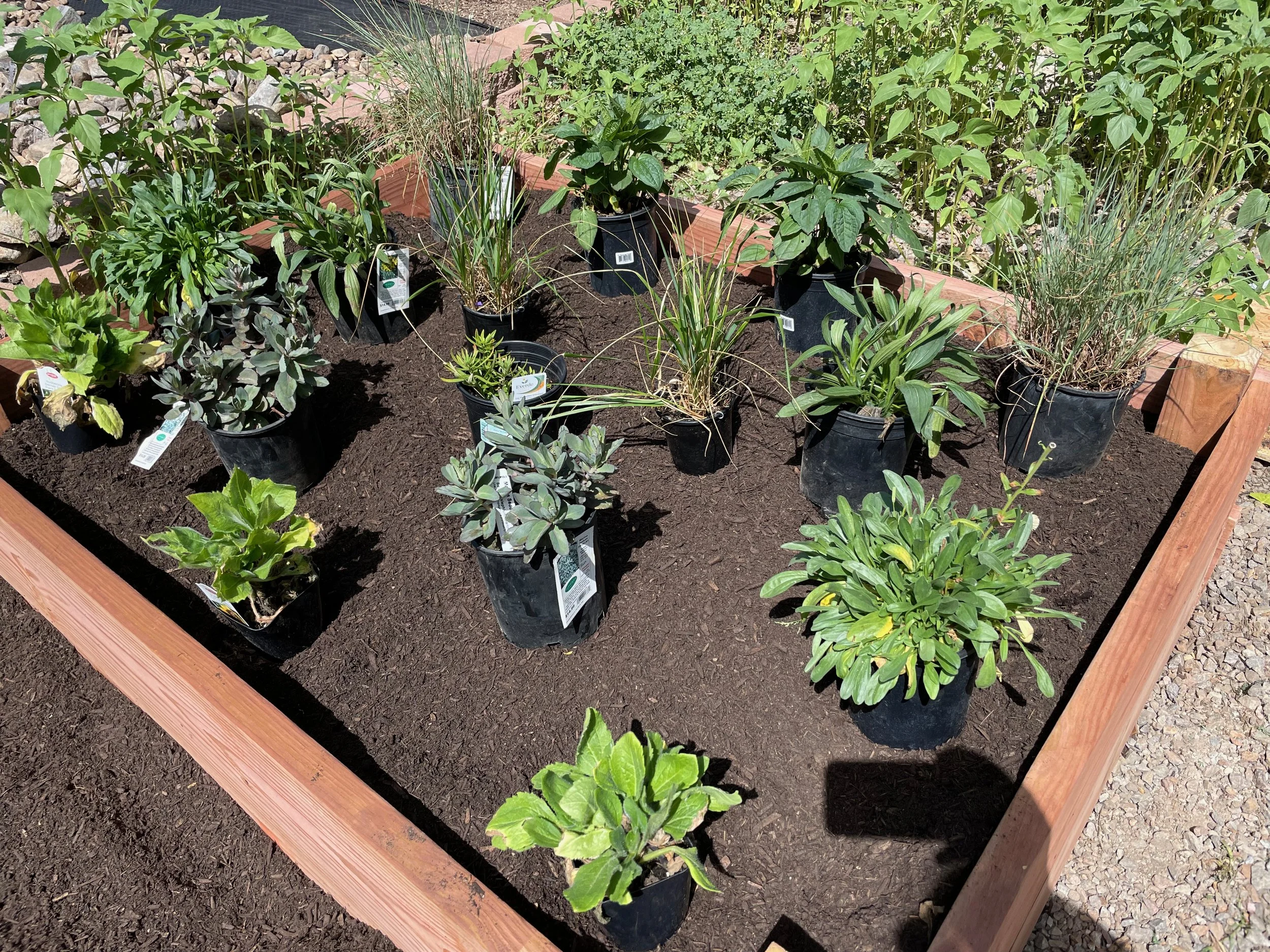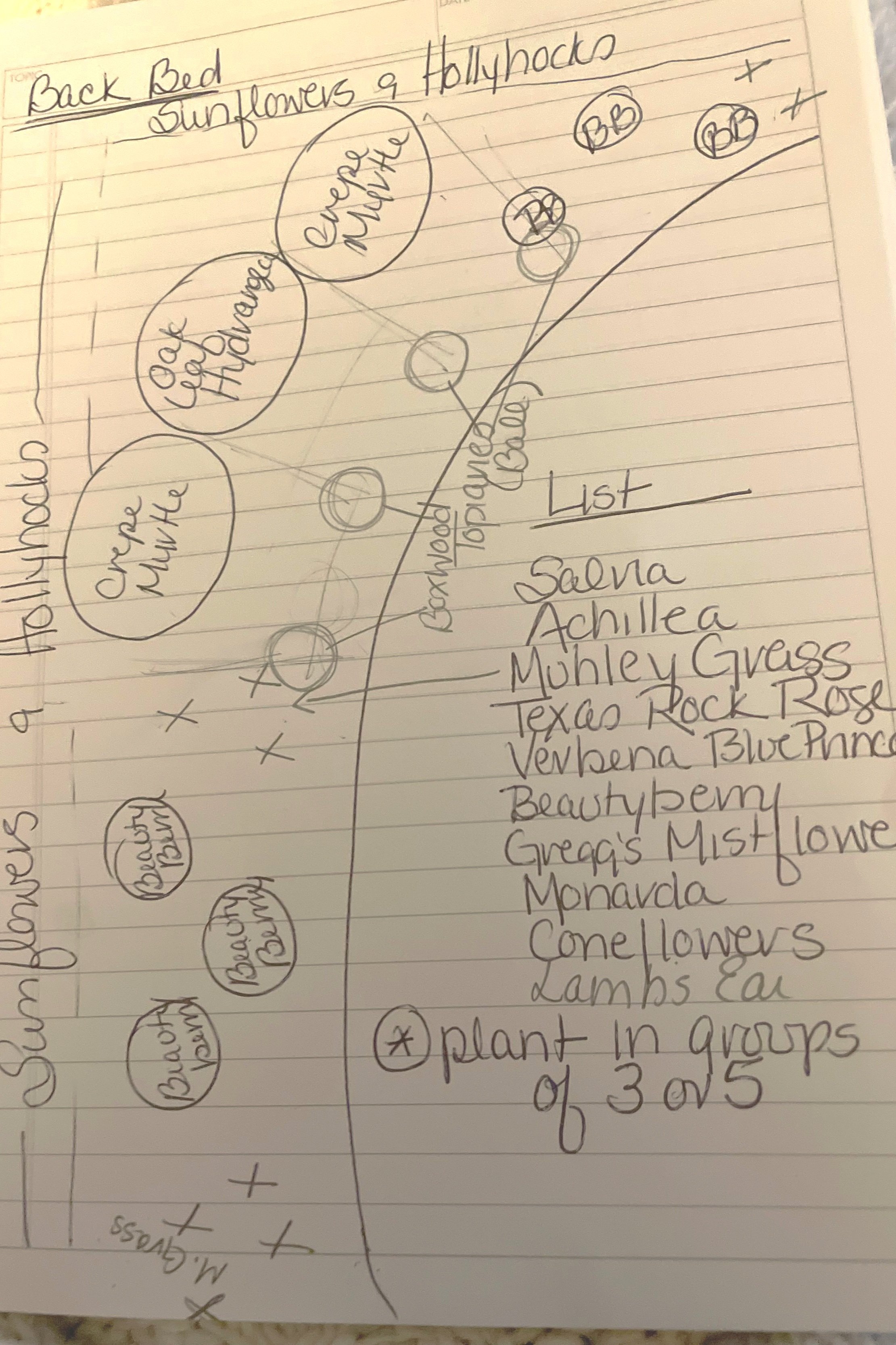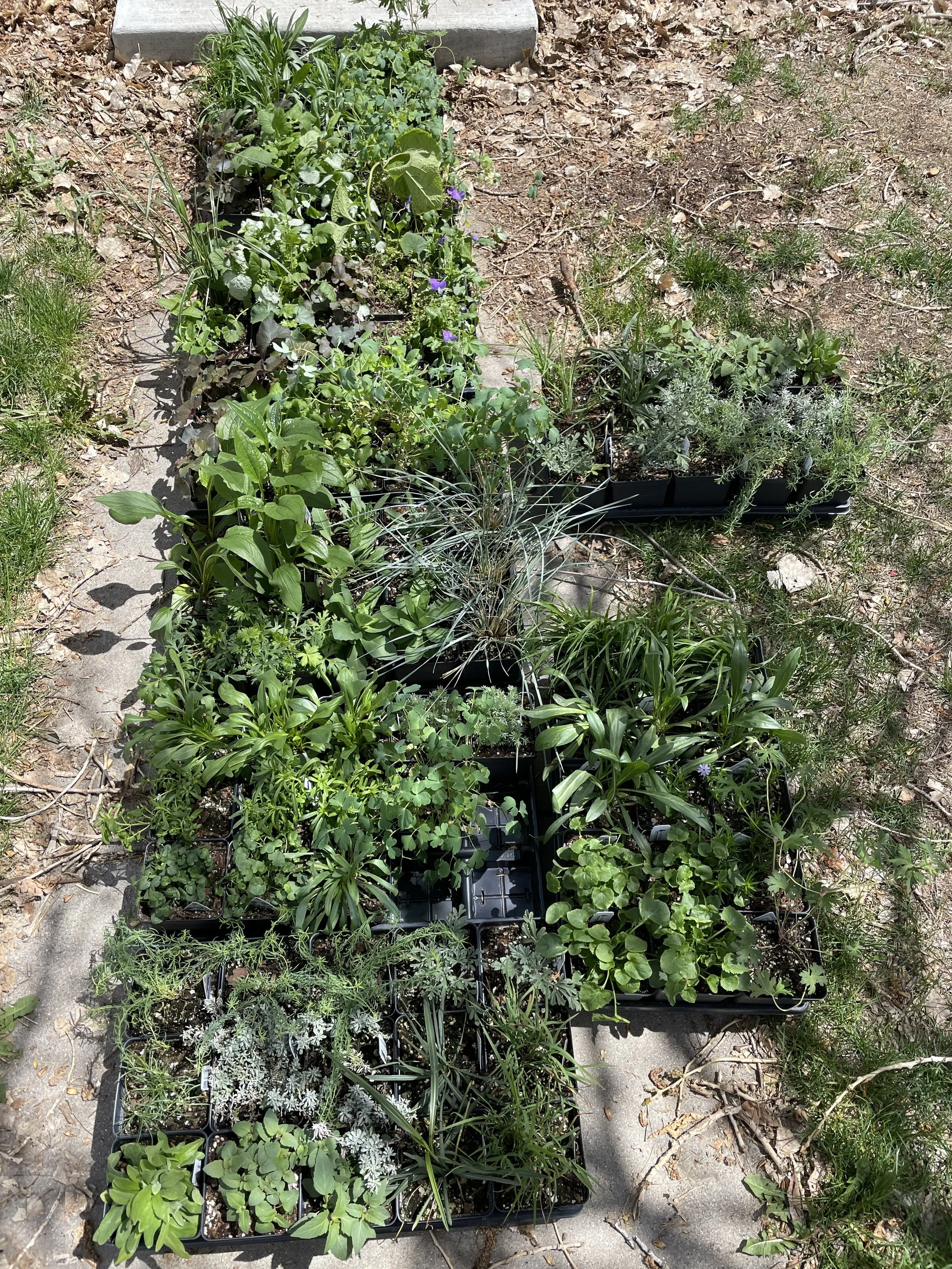Right Plant, Right Place
Tips for Using Beth Chatto’s Immortal Advice in Your Garden
If you are thinking beyond the container and out into your landscape, choosing the right perennials for your location goes a long way toward making better ecological choices. Decades ago British garden designer Beth Chatto coined the phrase "right plant, right place." And this is by far the best way to garden with the lowest negative impact. To plant something that will live and thrive for years, decades in the same place because the conditions are appropriate for that plant – that's the goal. That's the "maintenance free" garden, right?
Beth Chatto (1923-2018) is one of those garden designers that every North American gardener can learn from. She was a British plantswoman and pioneer who married ecological care with gardening decades before anyone else. Where most gardening was about shaping a landscape for human use, Chatto sought a garden that was both beautiful and useful to the surrounding ecosystem with as little intervention as possible. Her Gravel Garden was revolutionary at the time – a garden planted out with plants that required no irrigation and self-seeded and changed over time with a light human touch.
Many of her ideas have become mainstream today. None more so than her concept of "right plant, right place" – the cornerstone of modern garden design. Chatto argued that if you match the right plant with the right location, that plant will thrive. And if a plant requires too much work, then it simply isn't suited to its location.
But just because it is somewhat mainstream in the garden design world doesn't make it any less revolutionary. When we look at the plant offerings in our local garden centers and big box stores, many of the plants on offer won't be the right plant for most places.
Impatiens? Unless you live in zones 10-11, probably not.
Hydrangeas? How much watering are you willing to do?
Bradford Pear? Do you love invasive plants that stink and threaten to take over wild spaces?
And yet you can walk into any big box store in North America and probably find all three of those plants – regardless of where you are.
No wonder new gardeners struggle. No wonder homeowners think they just can't garden. It's nigh on impossible to find the right plant to put in the right place!
So here are my tips for finding the right plants no matter where you live.
Avoid Big Box Stores – and Keep Your Receipts
We all start somewhere as beginning gardeners. And most of us have killed more plants than we can count. Big box stores are the hardest places to shop as new gardeners. They are most likely to have a plant selection which is problematic for your climate, sadly. Most big box stores stock all of their stores with a similar plant selection regardless of where the store is located.
So when you find a table of Caladiums marked as "perennials" in a zone 5 location – you might as well light your hard-earned cash on fire, frankly. The average gardener may see those perennials, stick them in the ground, and not understand why the plant dies over the winter. But that plant is only perennial in zones 9-11. Yes, technically, it is a perennial – but it is perennial under specific climatic conditions which your zone 5 location can't fulfill.
The only good thing about buying plants at big box stores is their return policy. Most of them give you a year from purchase to return a plant if it dies. So file away those receipts if you choose to shop at a big box store.
My strategy: I will often shop at big box stores for plants on sale and bedding plants. But I almost never buy perennials there – and I always keep my receipts.
Consult your Local Master Gardeners & Ag Universities
Many Master Gardener groups have lists of plants that work well in their particular location. And many land-grant universities also have lists of species. They develop these lists to help gardeners and homeowners make good choices, to avoid invasive plants, and to save money, and these resources are available for free.
For example, after years of research, CSU has created a fabulous list of trees that are recommended for the Colorado Front Range – an area where growing trees is increasingly difficult due to declining moisture levels and climate change. As a Colorado Master Gardener, I often answer questions about trees from our clients, and this list is an invaluable resource for us when making recommendations, but it is also available to the general public.
Lists like this will come up if you add "site:edu" to the end of your search terms. So a search for wildflowers of New Hampshire becomes: wildflowers of New Hampshire site:edu. That limits your search criteria to university sites which increases the reliability of the search results and skips the AI generated results (which are often very, very wrong).
Other great sources for lists:
Xerces Society: insect-friendly plant lists for different parts of North America
Homegrown National Park: focused on keystone species
Research Before You Buy
When I go shopping for plants, I generally work from a shopping list. It's just like going to the grocery store. I keep lists of plants I'm interested in trying, and it's sorted by different areas in my garden. My list is species-specific, too. What variety of Salvia, for example, has been recommended? And which type of Amelanchier will work best? I keep my list in a private Pinterest board, so it is always accessible when I am shopping.
But what happens when I see something that looks interesting, and it isn't on my list? I do a little on-the-spot research. This is an easy thing to do.
Pull up your browser.
Type in the plant's Latin name and your state (for example "Amelanchier canadensis Colorado")
Check what local people say about that particular plant and how it performs.
For even more reliable results, include "site:edu" at the end of your search which will limit your search results to academic institutions. Your search would look like this: Amelanchier canadensis Colorado site:edu
If there are good recommendations for that particular plant, great! If it doesn't get good reviews, then skip it and find something else.
Shop Native Plants
Of course, the plants that will perform the best in your area are generally native plants. And most good garden centers will have a native plant section. There are even specialty nurseries which only grow and sell native plants for your location. These are fabulous places to shop!
And there are great online nurseries that specialize in wildlife-friendly and native plants, too. And a bonus: many of these growers sell their plants in small pots. They are easier and lighter to ship, and they get established more quickly, too. So don't be thrown off by those tiny plants. They are mighty and will flourish!
My trusted sources:
Find your local native plant society – they probably have a native plant sale like mine does each spring!
Search for "Native plant nursery near me" to find nurseries with good native plant selections. In the Denver area I like: Finding Nectar.
Your local botanical gardens may also have an annual plant sale featuring native plants. The Denver Botanic Garden's sale is usually in the first week of May.
Check with your Water Utility
Many water utilities have incentive programs to encourage people to use waterwise plants in their landscaping. Some go even further and partner with native plant nurseries and other growers to provide pre-planned gardens at discount prices for their customers.
Garden-in-a-Box is one such scheme here in Colorado, and it is FABULOUS! Each spring and fall they have a selection of pre-planned gardens which can be purchased with discounts from local water utilities. The gardens have been planned by local garden designers. They use largely native plants, all of which are useful to native insects. And they are quite inexpensive.
I have purchased Garden-in-a-Box assortments several times with fantastic results!
Additionally, your city, county, or state may have lawn-replacement incentives which help with the purchase of waterwise plants for your climate. You might receive rebates, tax incentives, or even plants themselves.
Sometimes these programs are a little hard to find, but calling your local water utility may be the answer.
Finding the "right plant, right place" can take some time and some experimentation. But there are wonderful resources out there to help!
A few more tips:
Move your plants.
Don't be afraid to move plants if they aren't thriving after a year or two. Perhaps they are getting too much sun, too little water, too much water. There's nothing wrong with digging a plant up and moving it to help it thrive. This used to terrify me, but now I move plants all the time. Some are best moved in the spring, others in the fall. A little research will give you hints about them. But by all means, move your plants!
Observe your place.
Do some keen observation of your property. Where are the wet and soggy spots? Do you have areas that are particularly dry? What gets morning sun? Afternoon sun? Dry shade? Draw a quick and dirty sketch of your garden area, and start to write down those observations. It's remarkable what you can learn in a short period of time!
Take your time.
It doesn't have to all be done at once. I have been working on my garden for nearly eight years as of this writing. It is little by little, moment by moment. When I have $100 I go spend it on a few plants. But I have a plan, and that is a big part of why it has been a success over time.
If you have questions, just ask! We are all here to help each other, and if you have a trouble spot, let us know. We may have the perfect suggestion.
The comments section on my Substack is full of gardeners with incredible feedback and ideas, too. Join my Substack, and you’ll see!










